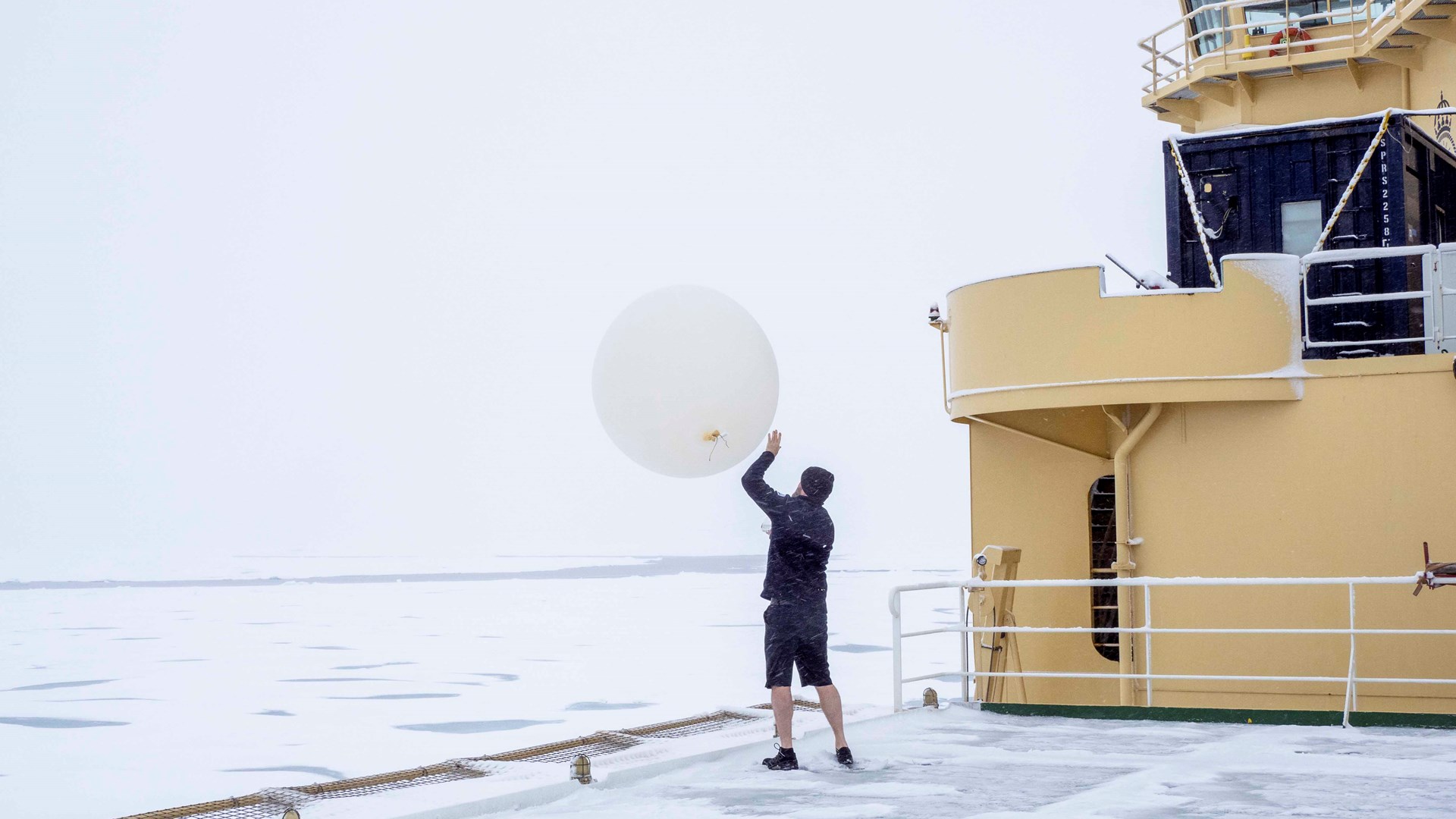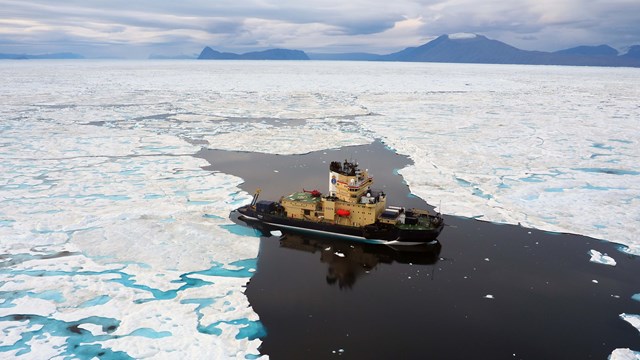Expedition controlled by the weather
 A weather balloon is released from the icebreaker Oden during the Synoptic Arctic Survey 2021 expedition. Photo: Swedish Polar Research Secretariat
A weather balloon is released from the icebreaker Oden during the Synoptic Arctic Survey 2021 expedition. Photo: Swedish Polar Research Secretariat
During this year's Arctic expedition with the icebreaker Oden, the researchers want to document the transition between winter and summer. This goal requires flexible planning and, based on weather forecasts, being able to move Oden to places where warm air enters the Arctic.
‒ A basic idea with the ARTofMELT expedition is that we should not be in a specific geographical location. With the help of advanced weather forecasts, we will see where we need to be with five to seven days' notice, and then we will move there. In between, we lie still and wait. Then it is possible to work on the ice, but only with equipment that can be taken on board in one day, says Michael Tjernström, Professor of meteorology at Stockholm University, who leads the expedition with colleague Paul Zieger, Senior lecturer in experimental atmospheric science at Stockholm University.
Parallel measurements should capture different processes
When Oden is in an area of warm air, many different observations will be made simultaneously in a so-called column ‒ from the upper part of the ocean, up through the ice and through the atmosphere.
The lowest atmosphere will be studied with the help of a tethered balloon, drones and instruments suspended below a helicopter, but also with different types of so-called remote sensing: radar, lidar and microwaves.
‒ We use helicopters and drones to see how the atmosphere behaves over a larger area. At the same time, a "mini-submarine" will be used to study from below how the atmosphere affects the ice, says Michael Tjernström.
A lot of data collection also takes place continuously on-board Oden
‒ Among other things, we will continuously study in high detail the properties of atmospheric gases, particles and clouds as well as the energy exchange at the surface. It is a challenge not to contaminate our observations with emissions coming from Oden and therefore we will turn Oden into the wind as much as possible, says Paul Zieger.
The observations are also supplemented by scheduled activities, such as weather balloons released every six hours and similar instruments lowered into the sea. The results from the weather balloons are also sent to weather services worldwide. This means that the researchers simultaneously improve the weather forecasts on which the expedition relies.
What expectations do you have for the expedition?
‒ Observational campaigns that focus on the atmosphere are relatively uncommon in the Arctic but because the atmosphere is erratic, varies from year to year, and changes rapidly they are extra valuable. As always in field research, one must expect the unexpected, so spontaneously, we expect surprises, says Michael Tjernström and continues:
‒ We know with great certainty that the melting season will begin when we are there, and it is also quite certain that we will experience at least a few episodes of warm air inflows. Otherwise, we must be flexible and adapt to what is happening in the climate system and constantly optimize our planning so that we capture as much as possible of what we want to observe, says Michael Tjernström.
Can you say something about the preparations?
‒ All participating researchers are now working with their instruments or measurement methods. There has been a lot of logistical planning. Everything needs to be in the right place on board and be able to function without creating problems for someone else. It's also about priorities and how we plan so that everyone gets as much as possible out of the expedition. Some observations cannot be made if others are prioritized, and we need to prepare so that the decision-making processes are optimized, so that the priorities that must be made are both optimal and transparent. For example, we have already had a "weather forecast exercise" based on forecasts for May 2022 to see what information we can get, what else we need, and above all, how we can ‒ or should ‒ think.



